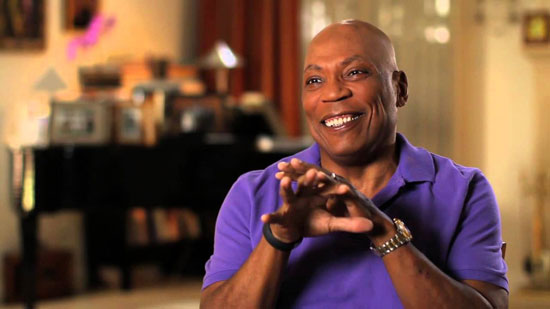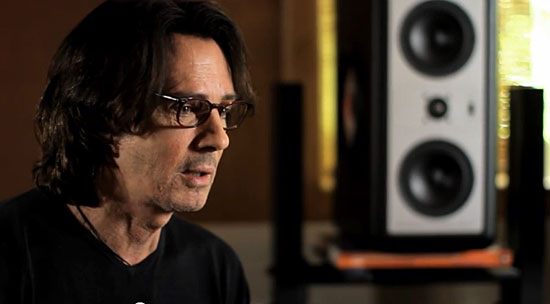Bringing star power to mental health
July 9, 2013

“Profiles of Hope” lets celebrities like producer/director Paris Barclay share how they overcame emotional pain.
It started as a handful of inspirational stories, shared by a few brave volunteers—how this one found help for depression, or how that one dealt with the fear of being labeled “mentally ill.”
Three years later, “Profiles of Hope,” the Department of Mental Health’s online video series, has become an unlikely hit as a public health campaign. Celebrities such as Rick Springfield, Mariel Hemingway and Paris Barclay are sharing their personal stories. Last year, it won a local Emmy in the information/public affairs series category. And on Thursday, the mental health department announced that 60-second versions of the videos have been nominated in this year’s public service announcement category. Meanwhile, a half-hour show comprised of the segments just wrapped its second season on KLCS-TV, the Los Angeles Unified School District’s public television station. And most recently, “Profiles of Hope” has been discussed as a training tool for counselors in the Cal State University system.
“A lot of people have sent emails about how much this has moved them,” says the acclaimed Barclay, who directed and produced much of the award-winning HBO series, “In Treatment.” “More importantly, they’ve also shared their own stories, which is the real goal—to start the conversation. One person reveals what’s happened to them, and another person comes back with their story. It’s part of the human process, the circle of revelation.”
The Department of Mental Health’s public affairs director, Kathleen Piché, said the goal of the videos is “to bust the stigma of mental illness, and not just by hearing from providers and clinics and the usual suspects.” The segments came about in 2010, she says, shortly after the creation of the Los Angeles County Channel. “They asked us if we wanted to do some programming,” Piché recalls.
At the time, she says, the Department of Mental Health was looking for new ways to help people overcome the shame and fear that often accompanies emotional and psychological problems.
“A lot of people say they resist getting help because they’re afraid of how others will see them,” Piché says. “But the earlier people get help, the better their outcomes, and right now, the average length of time from the time people first get symptoms to the time they get help is about 10 years.”
Piché says she initially saw the videos as a series of “day in the life” documentaries that would help viewers realize how many people suffer from some form or another of mental illness. Eventually, she settled on shorter, more intimate testimonials. “There are obviously issues about privacy,” she says. “But there are also people who want to talk about it.”
The department already had an informal speakers roster, as did the National Alliance on Mental Illness, she noted, and after a few calls, she found three current or former department clients willing to share their stories.
Myra Kanter, a nurse and patient’s rights advocate, spoke about her lifelong struggle with depression. Isaiah Hinnerichs, a client at the time in a county program for transitional-aged foster youth, talked about the mental health care that helped lift him out of homelessness. Gary Gougis, now a peer advocate at the Department of Mental Heath, talked about the panic attacks that for years had crippled his ability to function.
“At the time,” Piché says, “nobody knew how impactful they would be.”
Since then, she says, more than a dozen Profiles of Hope have been produced, featuring testimonials from people as disparate as a champion boxer, a combat veteran and a gay Vietnamese refugee. Most popular, however, have been the testimonials of celebrities talking about the ways that they’ve been helped by good mental health care.
Actress Mariette Hartley discusses her family history of suicide and alcoholism. Maurice Benard of “General Hospital” talks about managing his bipolar disorder. Robert David Hall of “CSI: Crime Scene Investigation” talks about how he summoned the emotional strength to rebuild his life after both his legs were amputated in the wake of a car crash. Rock musician Springfield shares his story of overcoming depression.
In addition to the 10-minute taped interviews, which are available on Facebook, YouTube, the County Channel and the DMH web site, shorter versions are being aired as public service announcements.
The spots, which initially were paid for by the County Channel, now are underwritten by funds from the Mental Health Services Act, which taxes income over $1 million to support mental health programs. Each testimonial costs about $13,000 to produce, says Piché, who’s been assisted by DMH Public Information Officer Karen Zarsadiaz-Ige.
But to their audiences, the spots are priceless.
“I think Profiles of Hope was so amazing,” one viewer recently wrote to the department, conveying a special thanks to Barclay for sharing the story of his battle with depression and alcohol. “Recently I recovered from a depressive episode.”
“Rick, thank you for this. THANK YOU,” another commented on Springfield’s YouTube public service announcement.
Next up, Piché hopes, will be a series of interviews with well-known people in politics, sports and public service. Meanwhile, Araceli Esparza, who coordinates Mental Health Services Act programs for the California State University system, says the videos are under consideration as a mental health resource for trainings and workshops on the system’s 23 campuses.
“This just keeps growing,” Piché says. “But I think people are willing to do this because they know that it works.”

In rock musician Rick Springfield's video, he reveals his battles with depression and suicidal thoughts.
Posted 6/20/13












 405 bridge work causes a stink
405 bridge work causes a stink

